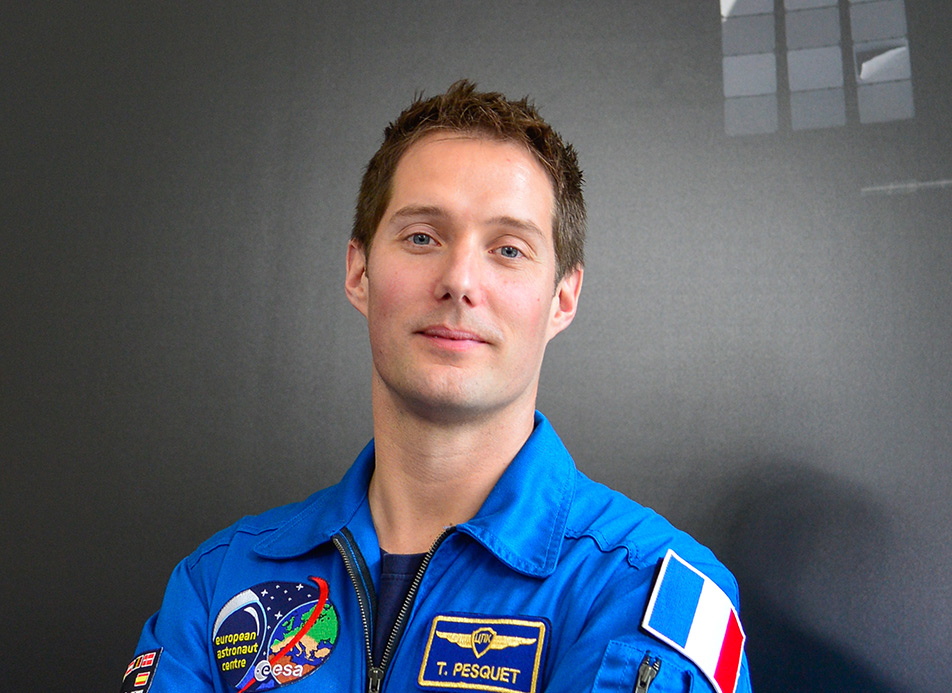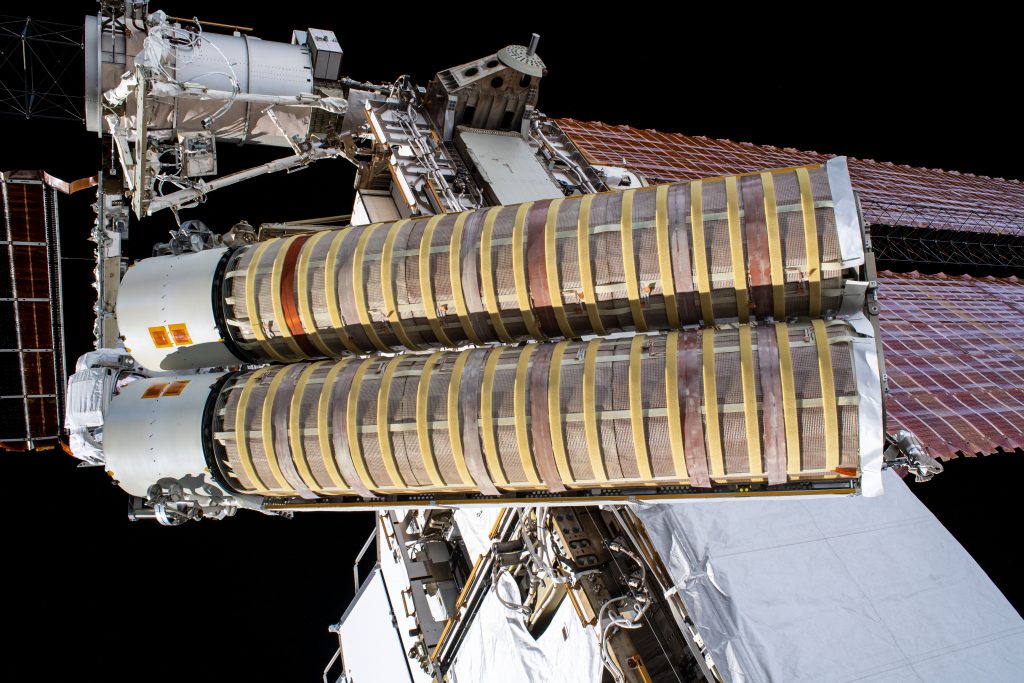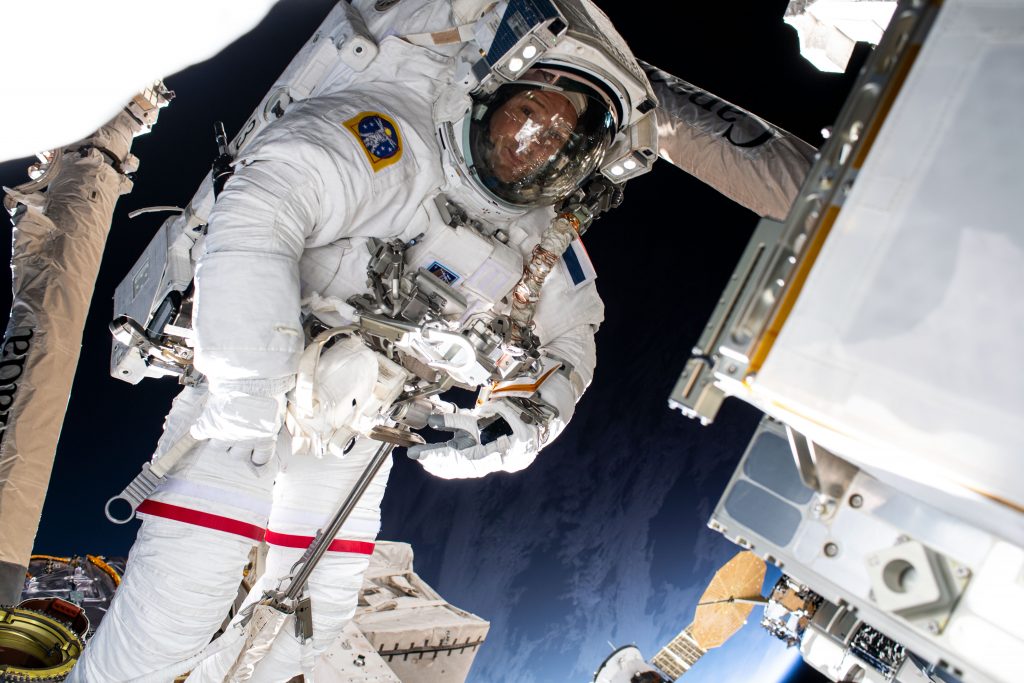For Thomas this will be his fourth spacewalk on mission Alpha alone. Aki, who is currently the Space Station commander has done three spacewalks already. This is the first time a spacewalk is being done without a NASA astronaut or Russian astronaut. Another novelty for this spacewalk is a 360 camera called ISS Experience that will film the duo working by robotic arm controlled from ground. Watch live from 13:00 CET on ESA web TV.
The spacewalk follows a number of spacewalks this year (Sunday’s will be US EVA 77), with Thomas and NASA astronaut Shane Kimbrough doing three spacewalks in June to install new solar arrays, while Russian astronauts Pyotr Dubrov and Oleg Novitsky prepared for the arrival of the new module Nauka.
This month Pyotr and Oleg have done two more spacewalks together to connect the Nauka module with many more to come.
NASA astronauts Mark Vande Hei and Megan McArthur will be helping the duo into their suits, the airlock, depressurising and helping them back after the spacewalk.
Aki and Thomas will be preparing the P4 truss for further installation of the new “IROSA” roll-out arrays. This is the same area as where Thomas and Shane installed two IROSA’s but closer to the main body of the Space Station. At this part, called the 4A channel, only one new solar array will be installed on a later spacewalk.

Artists’s impression of the complete set of new solar arrays placed over the existing ones. Aki and Thomas will be working to prepare the first solar arrays on the right that will only cover one of the wings. Credits: Boeing
A second objective for Thomas and Aki is to replace a floating potential measurement unit that is faulty. This unit measures the difference between the Space Station’s conductive structures and the atmospheric plasma.
The spacewalk
Thomas and Aki start at 06:45 GMT breathing pure oxygen and performing light exercise to purge their bodies of nitrogen that can be harmful when going from normal pressure environments like the Space Station, to the lower pressure environments of the spacesuits.
Megan and Mark will help them into their spacesuits and put on the SAFER backpacks that can propel them back to the Space Station in the very unlikely event that they lose contact with the hull and are not tethered. Once suited up they will enter the airlock at around 11:45 GMT.
NASA will try a new airlock depressurisation test in preparation for an airlock upgrade, making the process 20 minutes longer than usual.
Aki, in his suit with red stripes will leave the airlock first and take equipment bags from Thomas, after which Thomas will follow outside dressed all in white. Thomas will take the equipment and move to the worksite on the P4 truss, dropping of a bag along the way for later. Aki will take a foot restraint and follow Thomas to the worksite while also dropping off some equipment on the way.
When the duo are in place they will start setting up a modification triangle to allow the IROSA to be placed on the solar array base. Once assembled Aki will move to the other side, take the triangle from Thomas hold it in place and bolt it to the Space Station.
A support strut is then to be installed, with Thomas bolting it at the bottom, first with the Pistol Grip Tool, or screwdriver, then tightened to the correct torque by hand. Once finished Aki will do the same at the top of the support triangle. A second support strut is next, with a similar process followed.
A complicated set of manoeuvres, repositioning of foot restraints and handovers of equipment will allow the duo to start installing a third strut on the other side, providing rigidity to the new structure. They will then cover the supports with Multi-Layer Insulation for protection from the harsh environment of space.
Aki will start cleaning up the worksite, and then return to the airlock with equipment bags to get the spare floating potential measurement unit that will be replaced. Thomas will move over to the P1 truss where they will spend the second part of the spacewalk working. First Thomas will secure the worksite electrically by flipping a switch to turn off current. He will then install a foot restraint. Thomas will start installing a handling aid called a ‘scoop’ to more easily handle the unit that is being replaced.
The old unit needs to be unbolted and handed over to Aki, and replaced with the new unit and then bolted in place. Once done, Aki will take the old unit and move it to the airlock. Thomas will stay and clean up, retrieve his foot restraint, flip the electricity circuit breaker on his way back and join Aki in the airlock.
https://twitter.com/NASA/status/1436390198141669378
Timeline:
| Central European Summer Time | Greenwich Mean Time | |
| 13:00 | 11:00 | Live transmission starts |
| 14:30 | 12:30 | Aki and Thomas leave the airlock |
| 14:45 | 12:45 | Worksite preparation |
| 15:10 | 13:10 | Start work on triangle |
| 15:35 | 13:35 | Install first strut |
| 16:00 | 14:00 | Install second strut |
| 16:55 | 14:55 | Install support strut on other side and multi-layer insulation |
| 19:05 | 17:05 | Clean up worksite 4A |
| 19:15 | 17:15 | Replace floating potential measurement unit |
| 20:35 | 18:35 | Return to airlock |
| 20:50 | 18:50 | Repressure airlock |





